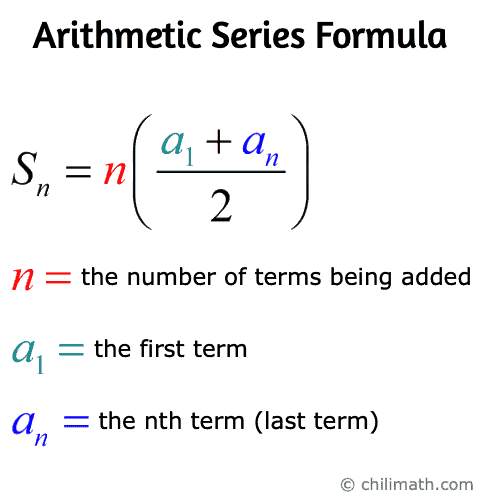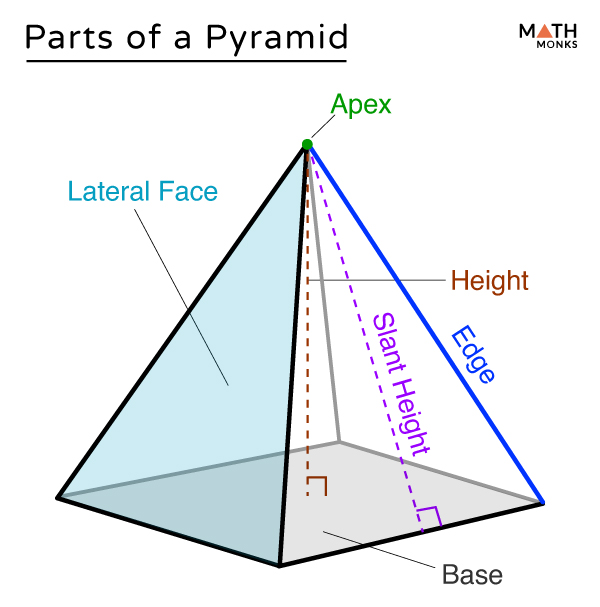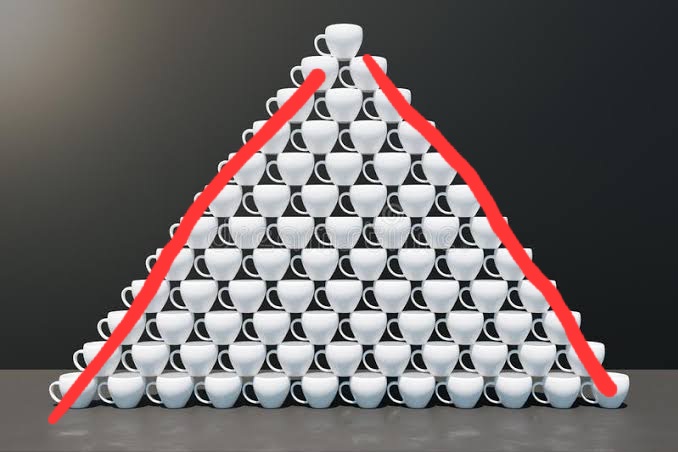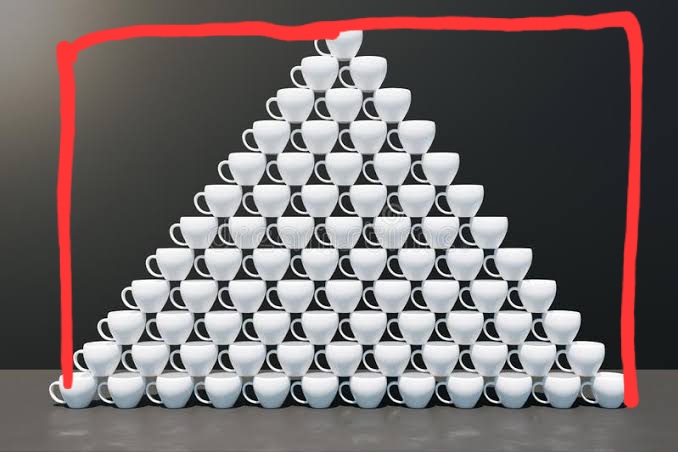Shadow Wolf
Certified People sTabber
I did it as I would doing inventory and chunking rows together adding the sums of those chunks (minus the machine).
Welcome to Religious Forums, a friendly forum to discuss all religions in a friendly surrounding.
Your voice is missing! You will need to register to get access to the following site features:We hope to see you as a part of our community soon!
I would turn it into a rectangle and then calculate the area. I would still need to count length and width but that is all I would need to count.Suppose you have this two-dimensional pyramid of cups:
How can you count the number of cups without counting the cups individually?
Bonus question: Assume this pyramid is turned into a pyramid with four faces, with each face looking like the pyramid in the picture. How many cups are there in that tetrahedral pyramid?
Please use spoiler tags for your answers!
Hey, this is sharp. I must try this "ispoiler" tag sometime.I know this is a very non-mathematical answer, but as a former bowler, my eyes automatically cordoned them off into groups of 10. I saw 7 sets of 10, then saw the 5 remaining in the 5th row and the three in an upside-down triangle directly below.
264. 78 x 4 minus the 48 shared at each corner.
I'm probably wrong, though. I didn't double check my work.



I know this is a very non-mathematical answer, but as a former bowler, my eyes automatically cordoned them off into groups of 10. I saw 7 sets of 10, then saw the 5 remaining in the 5th row and the three in an upside-down triangle directly below.
264. 78 x 4 minus the 48 shared at each corner.
I'm probably wrong, though. I didn't double check my work.
Tagging everyone who has given this a shot now that I'm posting the answer!
@Jedster @Subduction Zone @fantome profane @LuisDantas @ChristineM @exchemist @Shadow Wolf @bobhikes @SalixIncendium
1) To count the cups in the two-dimensional pyramid, we can treat each level as a term in an arithmetic sequence with a common difference of one, a first term = 1, and a last term = 12. The sum of an arithmetic series up to the nth term is given by this formula:

This makes the sum until the 12th term = 12[(1 + 12)/2] = 12(6.5) = 78 cups.
2) For the tetrahedral pyramid, we have to account for the four shared columns of cups, which make up the lateral edges:

The problem with multiplying 78 by 4 to get the answer is that it means we'll be counting the lateral edges eight times instead of four. This gives an extra 12 x 4 = 48 cups.
Instead, we will construct the outer structure made up of the four columns, which have 11 x 4 = 44 cups, and then calculate the number of cups in each of the four faces, excluding the columns:

You'll notice that the top cup is shared, which means the four columns, highlighted in red, each have 11 cups, so the outer structure has 4 x 11 = 44 cups.
For the inner triangle making up the four identical faces, we have an arithmetic series with a common difference of one, a first term = 1, and a last term = 10. The sum until the 10th (and last) term is 10[(1 + 10)/2] = 10(5.5) = 55. So the four faces have 55 x 4 = 220 cups.
Adding the cups from the four columns and the shared cup on top, the tetrahedral pyramid has 1 + 44 + 220 = 265 cups.
I'm still trying to work out why it is not 72, i.e. half of 12 x 12.
That is what one gets by making a rhombus of cups, but that is another way to solve it.
I would turn it into a rectangle and then calculate the area. I would still need to count length and width but that is all I would need to count.

I didn't physically draw it out yesterday morning as I did just now in my attempt to demonstrate the breakdown, and I swear I was able to mentally map out 7 sets of 10 with 8 left over. But for whatever reason, I'm only to find 6 with 18 left over. But this is basically the way my brain broke it down, though obviously not exactly.Your approach worked just as well, and I'm still trying to wrap my head around how you grouped the cups together into sets of 10—especially the part where you mentioned the fifth row. Could you elaborate on that more? I'd like to understand all of the different ways to solve this.
I made a similar error in omitting the top cup and was off by 1.Damn i forgot the top cup was shared on 2 sides
I didn't physically draw it out yesterday morning as I did just now in my attempt to demonstrate the breakdown, and I swear I was able to mentally map out 7 sets of 10 with 8 left over. But for whatever reason, I'm only to find 6 with 18 left over. But this is basically the way my brain broke it down, though obviously not exactly.
View attachment 80566
Somehow yesterday, the 5th row of 5 and three of the cups in a triangle below it were the left over cups in the 7 sets of 10, but now I'm unclear how that happened or if it was just an error on my part.
Dang it, I said rhombus when I meant to say parallelogram. I was thinking that one could make two triangles as shown , but use glue on one of them so it could be flipped upside down and placed next to the other one. I knew that I would have a base of one greater than the angled side. Since you had two you would divide the number that you got when you multiplied the N + 1 base times the N side. by two.The reason that half of 12 x 12 is not the number of cups in this case is that constructing a square around the triangle would give a square with double the area of the triangle, but the area doesn't account for the irregularities in the shape of the cups.

In a triangle formation, the cups can't be arranged to perfectly fill exactly half the area of the square. It's like pouring a given amount of batter into a square pan, where it perfectly takes the shape of the pan, versus pouring it into a circular one with the same area and then trying to fit the cake into the square pan. Although the area is the same, the different shape means that the cake will have to be cut at the corners and not fit perfectly.
Okay I did not do the pyramid that way, but I was thinking of a solid one. So it would have 12^2 cups at the base 11^2 cups in the next level, all the way to the top.Tagging everyone who has given this a shot now that I'm posting the answer!
@Jedster @Subduction Zone @fantome profane @LuisDantas @ChristineM @exchemist @Shadow Wolf @bobhikes @SalixIncendium
1) To count the cups in the two-dimensional pyramid, we can treat each level as a term in an arithmetic sequence with a common difference of one, a first term = 1, and a last term = 12. The sum of an arithmetic series up to the nth term is given by this formula:

This makes the sum until the 12th term = 12[(1 + 12)/2] = 12(6.5) = 78 cups.
2) For the tetrahedral pyramid, we have to account for the four shared columns of cups, which make up the lateral edges:

The problem with multiplying 78 by 4 to get the answer is that it means we'll be counting the lateral edges eight times instead of four. This gives an extra 12 x 4 = 48 cups.
Instead, we will construct the outer structure made up of the four columns, which have 11 x 4 = 44 cups, and then calculate the number of cups in each of the four faces, excluding the columns:

You'll notice that the top cup is shared, which means the four columns, highlighted in red, each have 11 cups, so the outer structure has 4 x 11 = 44 cups.
For the inner triangle making up the four identical faces, we have an arithmetic series with a common difference of one, a first term = 1, and a last term = 10. The sum until the 10th (and last) term is 10[(1 + 10)/2] = 10(5.5) = 55. So the four faces have 55 x 4 = 220 cups.
Adding the cups from the four columns and the shared cup on top, the tetrahedral pyramid has 1 + 44 + 220 = 265 cups.
@anna. You get a mention as well for your kind gesture of bumping the thread!
I'll admit there are some assumptions. I used a cup as measurement and half a cup as a measurement but otherwise my answer was correct. If I split the triangle in half with a perpendicular line and flip it so the two halves form a rectangle I get 12 high by 6.5 wide again with some assumptions this equals an area of 78 cups. The only reason I would have to do this is for taking a test and the tests I take are multiple choice so as long as I don't have to show my work I would get the right answer.The reason that half of 12 x 12 is not the number of cups in this case is that constructing a square around the triangle would give a square with double the area of the triangle, but the area doesn't account for the irregularities in the shape of the cups.
In a triangle formation, the cups can't be arranged to perfectly fill exactly half the area of the square. It's like pouring a given amount of batter into a square pan, where it perfectly takes the shape of the pan, versus pouring it into a circular one with the same area and then trying to fit the cake into the square pan. Although the area is the same, the different shape means that the cake will have to be cut at the corners and not fit perfectly.
